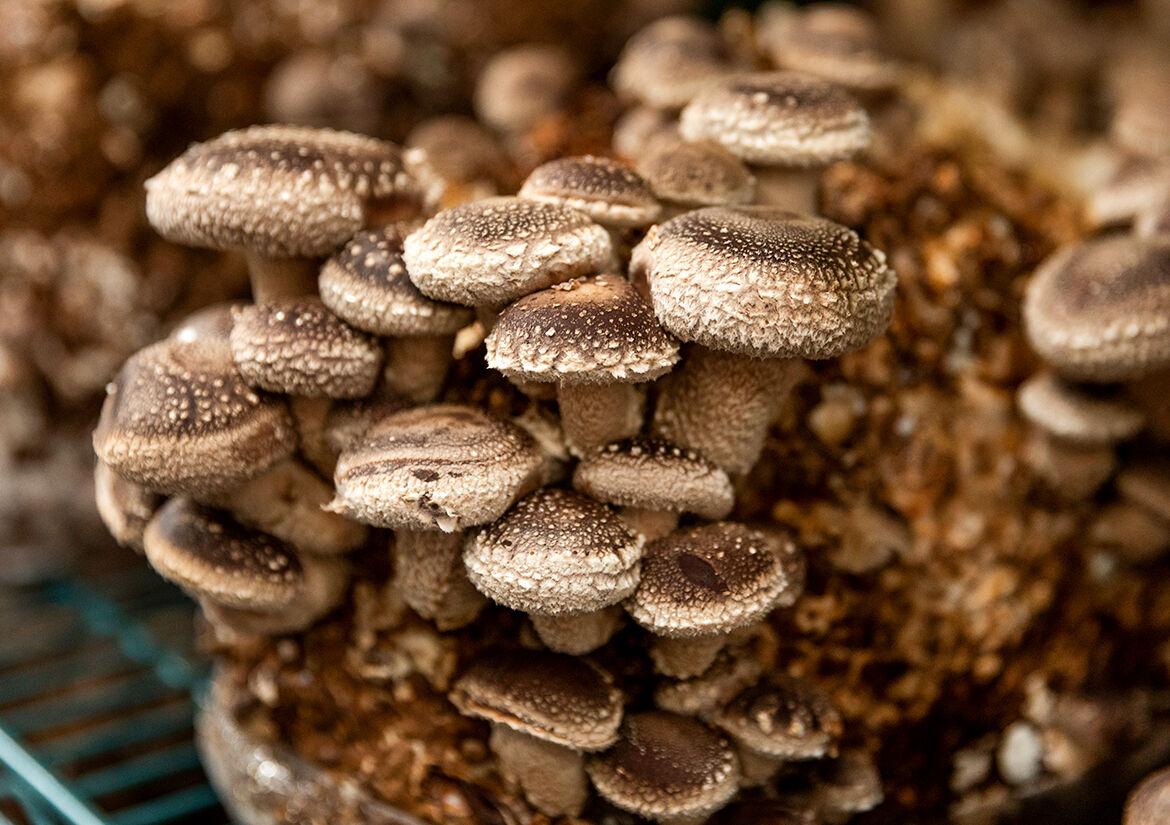Fungiculture: Everything you need mushroom farm

Have you at any point thought about how mushroom farm develop? In the wild, mushrooms duplicate by delivering spores, what might be compared to sow seeds. The blending of spores prompts the development of mycelium, a root-like organization of slender, white strands that are frequently tracked down underground or inside trees and rotting logs. Mycelium produces pinheads which in the long run “natural product” into regular mushrooms, finishing the existence cycle.
People have searched wild mushrooms for millennia, yet the ones you find in the store today were undoubtedly become on a homestead. Americans favor the omnipresent white button assortment. It stays the most broadly created and devoured mushroom in the U.S., however buyer tastes have begun stretching out to other culinary species, like shiitake, lion’s mane and clam mushrooms. Large numbers of these consumable assortments are really developed inside, all year. Mushroom farm ranches are progressively famous in urban areas, where new collects of strength assortments can be handily conveyed to eateries, supermarkets and ranchers’ business sectors.
Today, metropolitan ranches like R&R Cultivation in Roseville, Minnesota, endeavor to make the best conditions for mushrooms to develop, utilizing a firmly controlled interaction that can be separated into the accompanying five phases:
1. Generating
Indoor mushroom development begins with generate, which is a mix of spores and supplement sources like grain, straw or wood chips. Produce acts, generally, similar to what might be compared to sourdough starter in bread baking. The underlying sustenance given by bring forth assists speed with increasing the remainder of the developing system. Ranchers can deliver their own or buy generate from different providers. R&R Cultivation initially sourced natural generate from Maine Cap N’ Stem prior to moving to a nearby provider close to the Twin Cities, New Hope Farmacy. At last, R&R plans to deliver its own bring forth in-house, a cycle that includes setting bits of newly cut mushrooms onto agar, a high-supplement developing surface, to launch the development of spores into mycelium.
2. Vaccination
The produce is then added to substrate, which is a massive developing medium, frequently wood pellets, sawdust, straw or coffee beans, that is blended in with water and fixed in a sack. Mycelium utilizes the substrate for energy and supplements as it keeps on developing. The immunization cycle requires a clean climate to lessen the chance of form, microscopic organisms or different growths from contending with mushrooms for the substrate’s supplements.
3. Brooding
The vaccinated blend is set in a warm, dim area to permit mycelium to totally colonize the substrate. Brooding can take anyplace from half a month to a couple of months, contingent upon the mushroom assortment and developing conditions. Blue shellfish are the most forceful assortment and will colonize inside nine to 14 days, while shiitakes can take somewhere in the range of 8 and 14 weeks.
4. Fruiting
After brooding, the sack is cut open in a temperature-controlled fruiting space to uncover the colonized substrate to natural air, muggy conditions and a touch of light. Pinheads will begin to shape, in the end developing into mature mushrooms. The fruiting system shifts by species; clam mushrooms can be gathered in as little as seven days, while pioppino and lion’s mane assortments require up to three or a month.
5. Gathering
Gather times change contingent upon the types of mushroom, and each has its own sign of development, yet size isn’t one of them. For instance, for a shiitake mushroom, the rancher takes a gander at the mushroom’s cloak, or the slim layer on top of the cap that is appended to the stem covering the gills. At the point when a mushroom arrives at development, the cover will snap. Most ranchers will reap their mushrooms before the shroud breaks. Shellfish mushroom groups ought to be picked before the covers begin to smooth. Some mushroom assortments can be regrown in progressive harvests, known as flushes.
As per Nick Robinson from R&R Cultivation, each flush will yield consistent losses, and shiitakes will not yield a productive second flush for their employments. In the long run, mycelium will weaken and quit delivering new mushrooms. At R&R, the spent squares of substrate are reused into an authority organics dumpster, which Robinson says will probably be utilized as delightful manure for home nurseries.
The most effective method to develop mushrooms at home
Need to take a stab at developing your own culinary mushrooms? Pre-colonized develop units are a simple and economical way of beginning. Accessible from online retailers and cultivating stores, these units come as logs, sacks or squares. Essentially give the right fruiting conditions to the assortment you wish to develop, and you’ll before long be reaping delectable parasites in your own home. Shellfish mushroom farm are incredible for amateurs as they’re one of the quickest developing assortments and may convey future yields through various harvests.
As indicated by Robinson, the main factors for developing mushroom farm at home are light, temperature and mugginess. “Keep them cool, keep them clammy,” he says. “You don’t need them in direct daylight. Put your develop pack inside a plastic tub and splash it with an exceptionally fine fog to make a great deal of dampness inside there.”
In any case, watch out.
While searching for mushrooms in the wild can be a fun and remunerating action, numerous normal species are unappetizing, and some are even deadly whenever eaten. The most ideal way of finding out with regards to protected and mindful mushroom hunting is from a specialist. Search out a neighborhood mushroom club or part of the North American Mycological Association for more data on directed scrounging strolls, bulletins and other instructive projects.





